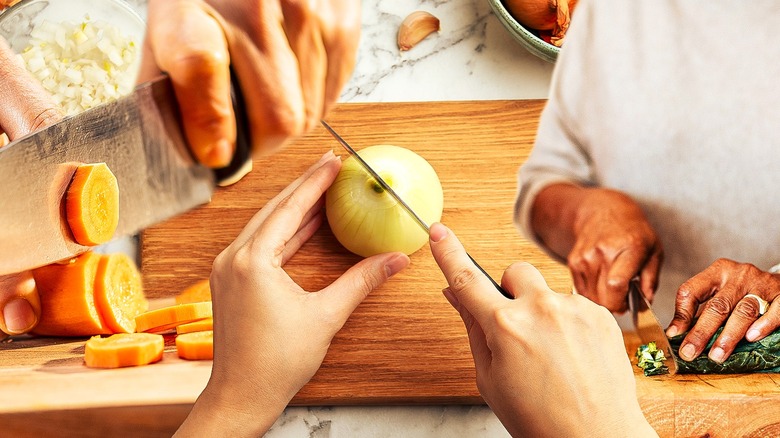Essential Guide for Barbecue Enthusiasts: How to Sand Your Cutting Board Right?
Written By James Morgan
Barbecue enthusiasts understand that every element of their craft needs precision and care, from selecting the right meat to maintaining their tools. One often overlooked yet essential component is the cutting board. Over time, cutting boards can become weathered, affecting not just their appearance but also their functionality. So, how do you restore your cutting board to its prime? The secret lies in learning how to sand cutting board expertly.

The Importance of a Well-Maintained Cutting Board
Your cutting board isn't just a surface to chop your vegetables and meats; its a vital tool that deserves as much attention as your grill or smoker. Sanding your cutting board can bring it back to life, ensuring it remains smooth, clean, and free from bacteria that can affect your food.

Essential Tools to Get Started
Before diving into the process, gather the following essentials:
- Sandpaper (ranging from 80-grit to 220-grit)
- Orbital sander or sanding block
- Mineral oil or food-grade board conditioner for finishing
- Clean cloth
- Protective gear (goggles and a mask)

Step-by-Step Guide: How to Sand Cutting Board
Step 1: Cleaning the Board
Start by thoroughly cleaning your cutting board properly. This removes any food particles or oils and ensures you're working on a clean surface.
Pro Tip: Avoid using harsh chemicals that can seep into the wood.
Step 2: Initial Sanding
Kickstart the sanding process with an 80-grit sandpaper. Attach it to your sanding block or orbital sander, and work with the grain of the wood. Apply even pressure and cover the entire surface, focusing on deep cuts or stains.
Step 3: Smooth Sanding
Once the initial roughness is removed, transition to finer sandpapers progressing through 120-grit, 180-grit, and finally 220-grit to achieve a glass-smooth finish. Each grit level refines the surface further, contributing to a softer feel and striking appearance.
Step 4: Finishing Touch
After sanding, wipe down the board with a damp cloth to remove any dust. Let it dry completely before applying a generous layer of food-safe mineral oil or board conditioner. This step not only nourishes the wood but also creates a protective barrier.

Ensuring Longevity: Regular Maintenance
Maintaining your cutting board is easy when you make it a habit. Re-oil your cutting board monthly, especially if it sees frequent use. For more tips on maintenance, check our article How to Finish Cutting Board.
Common Pitfalls to Avoid
Using Excessive Water
Water and wood don't mix well. Excessive water exposure can lead to warping or cracking. Always dry your cutting board thoroughly after cleaning.
Skipping the Finishing Process
Skipping the oiling step leaves your board vulnerable to damage and bacteria. Make sure you always finish the sanding process by conditioning the wood.
For more in-depth information on this topic, you might want to visit Cookbook: Cutting Board.
FAQ
1. How often should I sand my cutting board?
It's recommended to sand your cutting board once a year or when you notice significant wear and tear.
2. Can I use olive oil to condition my board?
It's best to use food-safe mineral oil. Olive oil and other cooking oils can go rancid over time.
3. What's the best wood for cutting boards?
There are various suitable types of wood. To know more about them, check our guide on What Wood is Best for Cutting Board.
As an Amazon Associate, I earn from qualifying purchases.



